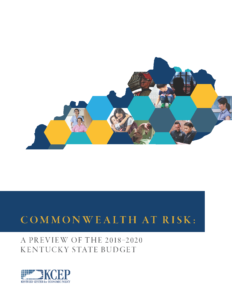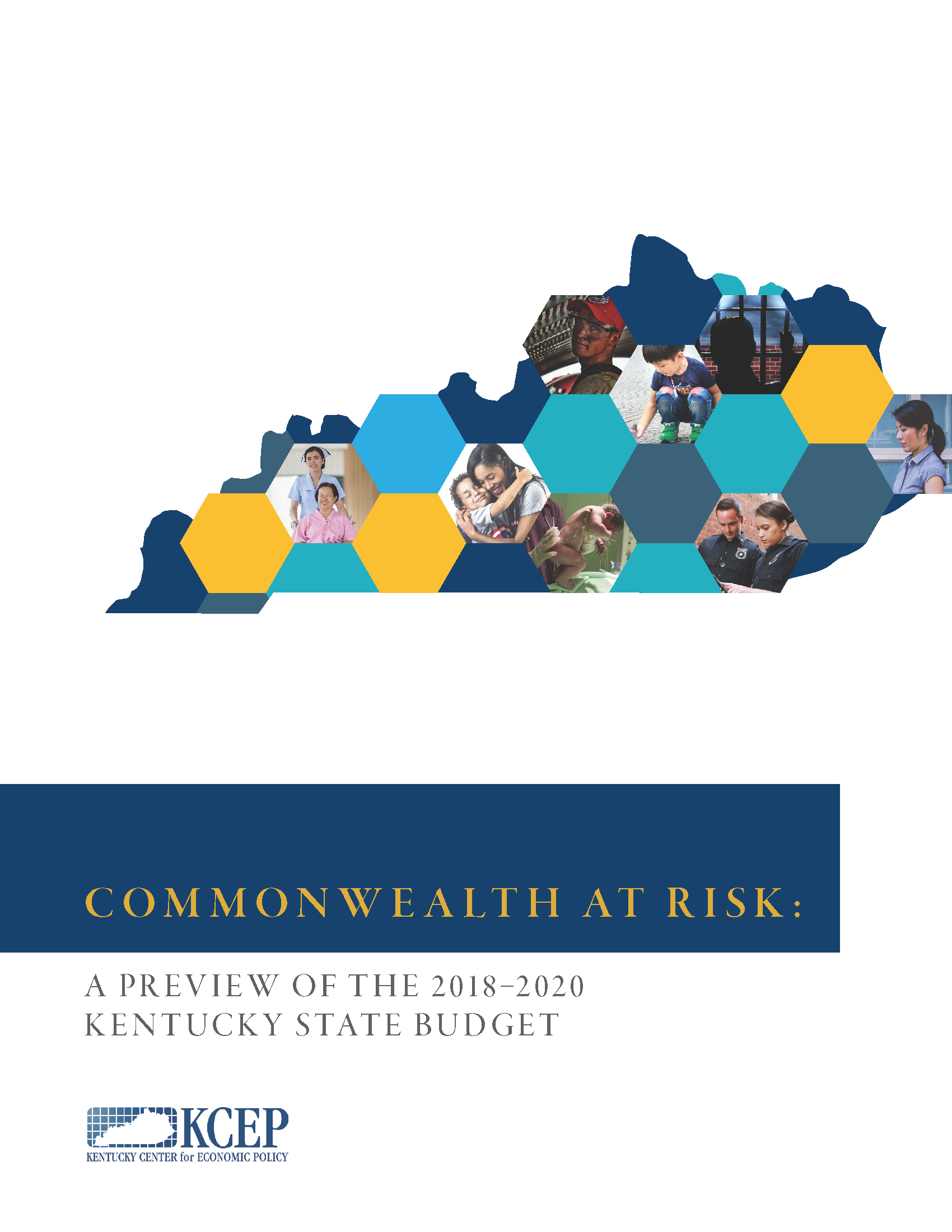 Round after round of damaging budget cuts, a decades-long refusal to clean up tax breaks, and the reality that additional appropriations are needed for pensions, corrections, Medicaid and other crucial state programs are converging to set up what will be one of the most difficult budget sessions in Kentucky’s history.
Round after round of damaging budget cuts, a decades-long refusal to clean up tax breaks, and the reality that additional appropriations are needed for pensions, corrections, Medicaid and other crucial state programs are converging to set up what will be one of the most difficult budget sessions in Kentucky’s history.
A report by the Kentucky Center for Economic Policy (KCEP), Commonwealth at Risk: A Preview of the 2018-2020 Kentucky State Budget, provides a comprehensive overview of the serious budgetary challenges faced by state agencies and educational institutions struggling to provide vital services with diminished resources. The report also scrutinizes why revenues have failed to keep pace with the growth in Kentucky’s economy, leaving the state in a condition where necessary expenditures far exceed available revenues.
More cuts will come on top of a decade of underinvestment in the commonwealth, as documented in the report. Already, funding for education through the SEEK formula has been eroded through inflation in recent years, adding up to one of the nation’s worst cuts. Some school districts are in severe financial crisis, and the gap between wealthy and poor districts is growing closer to what it was before the Kentucky Education Reform Act. Higher education has become increasingly unaffordable and thousands lose out on financial aid every year due to inadequate state resources.
The Departments of Corrections, Public Advocacy, Juvenile Justice, and Community-Based Services – all of which provide critical public protection and safety net services – are suffering from high turnover and vacancy rates due to low wages, high caseloads, long hours and difficult working conditions. The result of successive rounds of budget cuts, these conditions threaten the health and safety of Kentucky’s most vulnerable people. The opioid epidemic has further strained our criminal justice and human services systems and the decision last session to enhance and expand criminal penalties rather than supporting additional treatment options is only increasing costs. Our existing systems and programs are crumbling under the weight of increased needs and diminished resources.
As a result, the state is not making adequate progress on addressing racial, regional and economic disparities. In addition, we lack the resources needed to update our infrastructure and support economic growth in our communities going forward.




